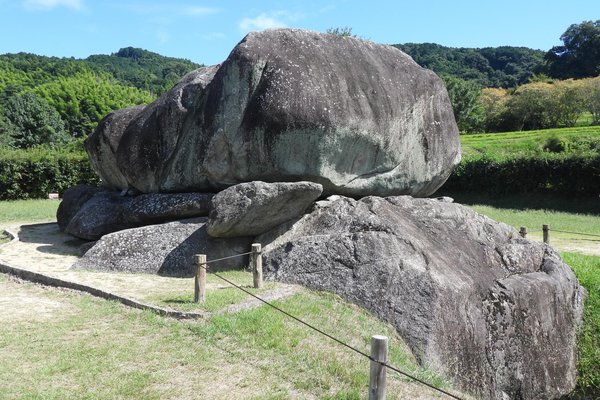Japan
Asuka-Fujiwara
The Ancient Capitals of Asuka and Fujiwara comprise a cluster of archaeological sites in the Asuka region, where the imperial capital was located from the time of Empress Suiko's enthronement in 592 A.D. to its relocation to Heijōkyo (Nara) in 710.
The component features of the site are principally the archaeological remains of palaces and residences of the emperor and imperial court and their related facilities; the site of Japan's first genuine capital city; and the remains of temples and burial mounds constructed in and around it for members of the imperial house, nobility, and other important personages during the century this area functioned as the capital.
Note: the 2026 nomination will include 19 locations instead of the previously listed 26.
Site Info
Official Information
- Full Name
- Ancient Capitals of Asuka and Fujiwara (ID: 5097)
- Country
- Japan
- Status
-
Nominated 2026
Site history
History of Asuka-Fujiwara
- Type
- Cultural
- Criteria
- ii
- iii
Links
- UNESCO
- whc.unesco.org
- Official
-
- asukamura.jp — Asuka Village
All Links
UNESCO.org
- whc.unesco.org — whc.unesco.org
Official Website
- asukamura.jp — Asuka Village
Community Information
- Community Category
- Archaeological site: Far Eastern
Travel Information
Recent Connections
News
No news.
Recent Visitors
Visitors of Asuka-Fujiwara
- AC
- Afshin Iranpour
- Alexander Lehmann
- Can SARICA
- Caspar
- Christoph
- Christravelblog
- CugelVance
- cwthong
- Daniel Chazad
- DouglasR
- Elisabeth Fransisca Situmorang
- Els Slots
- Errol Neo
- Frédéric M
- Frederik Dawson
- henrik_hannfors
- Hubert
- Kasia M.
- Kasper
- Kurt Lauer
- Lucio
- Mo-han Je
- nan
- Patrik
- Paul Schofield
- Philipp Peterer
- Randi Thomsen
- ReallyDeepThoughts
- Rick Ohm
- sncjob
- Stanislaw Warwas
- Svein Elias
- Szucs Tamas
- Thorben
- Tsunami
- Valentina
- Wojciech Fedoruk
Community Reviews
Show full reviews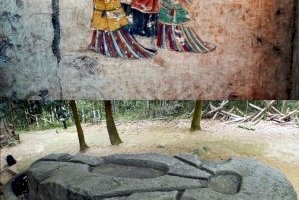
The Asuka period ranged from the mid-6th century to the early 8th century, when the imperial capital was first located in Asuka and then in Fujisawa for sixteen years. The period is characterized by the increasing influence of Korea and China on culture and society in ancient Japan. Important events at this time were the official introduction of Buddhism and the first written constitution in Japan.The term "archaeological sites" in the title of the TWHS suggests that most of the sites are underground and that little is visible of the original remains. And indeed, the TWHS entry at the Unesco website reads: „The component features of the site are principally the archaeological remains of palaces and residences of the emperor and imperial court and their related facilities (such as gardens, etc.); the site of Japan's first genuine capital city; and the remains of temples and burial mounds… These remains have been preserved beneath the earth in good condition down to the present, …”. The T-list entry does not specify the locations that are designated for a future nomination, only a few are mentioned by name (e.g. Takamatsuzuka Tomb, Kitora Tomb). But Wikipedia knows more and provides a complete list of 28 sites clustered in the municipalities of Asuka and Kashihara.
Coming from Nara, I arrived at Asuka train station in the early morning. Asuka is on the Kintetsu Railway Line, which is not included in the Japan Rail Pass. I fully agree with Zoë (see the review below) that …
Keep reading 0 comments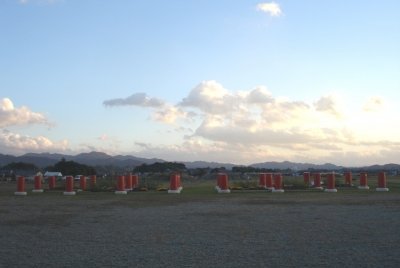
I just wanted to add the Fujiwara part of this nomination.
I visited the site in 2010 where the Fujiwara Palace of the Asuka Period used to stand, as shown in the photo.
I'd say this is important because the palaces of the kings, Tenno in Japanese, is perhaps the most important in any period.
In the Historic Monuments of Ancient Nara WHS, for example, the Nara Palace, called Heijo-kyo in Japanese, is the only one of its kind; all the other six elements of the WHS are religious edifices. (But the Nara Palace has been reconstructed; the Fujiwara Palace has not, as shown in the photo.)
In the Historic Monuments of Ancient Kyoto WHS I do not know why the Kyoto Palace, called Heian-kyo or Kyoto Gosho in Japanese, is not included in the WHS. It's most likely because it is just like the fact that the Jingu in Ise is not even nominated for a WHS, even though it is without a doubt the single most important historic site in Japan by any means: as the Japanese thinking goes, they are so important that they should not be protected by foreign money.
The Fujiwara Palace can be most conveniently reached from the Yagi-Nishiguchi train station on the Kintetsu Kashihara Line, four stations north of the Asuka station. From the train station it's about 2 km away.
Keep reading 0 comments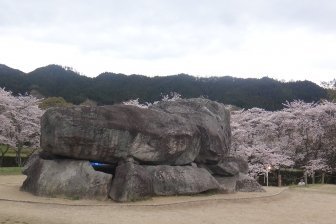
Asuka just screams "rent a bike". Arrive at the appropriately named Asuka railway station and there will be a bike rental place just on the side. This is the best way to see the area because it is a little far to walk but if you have the time it is also possible. There is an excellent tourist map for the area with many features you are trying to find such as stone sculptures and the burial rocks. If you arrive a little late in the day you can also get the bike cheaper (it was offered by the guy, Japan isn't a place to bargain on prices). Once you cross the main road to the east the paths are too small for cars and you will mainly come across other bikes and pedestrians.
The major place to visit is the Ishibutai Tumulus. There are surprisingly many tourists for something that isn't exactly attractive, has much to look at or is even going to take you more than 5 minutes to explore. I suppose it has a lot to do with the cherry blossom season which makes the area around it beautiful.
Overall you can spend a day here if an event takes place at the nearby multi-purpose rest area but half day is enough especially if you take the bike.
Keep reading 0 comments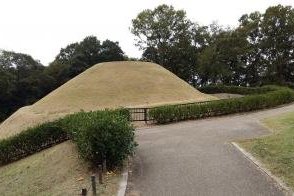
In the period from 538-710 the Japanese capital was at Asuka, 25km south of Nara. At the time there was no permanent residence of the emperors. With every succession a new palace was built and the court moved. This was due to the believe that the predecessor's spirit remained in the old site.
As a consequence, the area is dotted with ruins and burial mounds. In the Takamatsuzuka area (closest to Asuka station) there is a mural museum showing replicas of how it looks inside a burial mound. Please check the official website for more information.
OUV
The burial mounds are similar to those found in Korea. But this being Japanese, the site being relatively large and the time period not well covered in the current Japanese list, I feel this should be inscribed. Unfortunately, I did not make it to the other Japanese burial mound item on the tentative list, Mozu-Furuichi Kofungun, so I cannot compare the two.
Getting There and Away
The site is easily accessible on the Kintetsu railway line between Nara and Yoshino (Kii Mountains). I combined Yoshino and Asuka on a day trip from Nara. Note that this is not covered by the Japan Rail Pass.
Keep reading 0 comments
